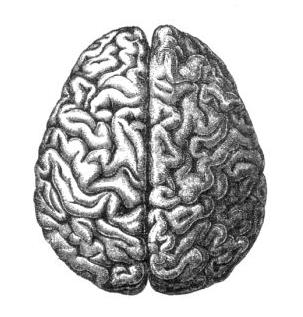 Protecting your brain and understanding what is healthy for it is simple. The tips mentioned in this article are easy for you to add to your already busy life. Adding one tip, like eat more antioxidant rich food, can keep you and your loved ones thriving at the centennial mark.
Protecting your brain and understanding what is healthy for it is simple. The tips mentioned in this article are easy for you to add to your already busy life. Adding one tip, like eat more antioxidant rich food, can keep you and your loved ones thriving at the centennial mark.
You’d be amazed at how a little change can improve your brain and your quality of life.
Your brain, spinal cord and peripheral nerves make up a complex, integrated information-processing and control system.
All of the tasks listed below are coordinated, controlled and regulated by an organ that is about the size of a small head of cauliflower.
The brain performs an incredible number of tasks, here are a few of them:
* It controls body temperature, blood pressure, heart rate and breathing.
* It accepts a flood of information about the world around you from your various senses.
* It handles physical motion when walking, talking, standing or sitting.
* It lets you think, dream, reason and experience emotions.
What’s good for the brain is also good for this system.
Let’s start with antioxidants.
Simply antioxidants are molecules capable of slowing or preventing the oxidation (stress) of other molecules. Antioxidants are often reducing agents such as thiols, ascorbic acid or polyphenols. (I’ll describe these in detail in a later post.)
As quoted by the Journal of Agriculture & Food Chemistry, the highest ranked anti-oxidant rich foods in four major categories are as follows:
Fruits: blueberries, cranberries, goji berries and blackberries, grapes, oranges, plums, pineapple and grapefruit.
Vegetables: beans, artichoke hearts, russet potatoes, kale, chili pepper, red cabbage, peppers, parsley, brussel sprouts, spinach, lemon, ginger, red beets.
Nuts: pecans, walnuts, hazelnuts, ground nut, almonds and sunflower seeds.
Cereals: barley, millet, oats, corn.
Dry Fruits: apricots, prunes, dates.
Spices: cinnamon, oregano, ground cloves.
Extra: raw chocolate and green tea
Future post I’ll talk about: a dietary supplement called phosphatidylserine (PS), which looks useful for memory. Ginkgo biloba is also helpful.
Tip number 2. What I believe and practice most with my clients, grandparents, friends is using <–more–> brain. Education seems to be very protective.
The more new information you are feeding to your brain, the better your memory is and the better it stays as you get older.
So play games that have you using your brain. Eat at foreign restaurants so you have to learn new foods. Drive a different route to your favorite destinations.
I think there are some kinds of education that are particularly useful, like learning another language, so I urge people to make an effort to learn another language. You don’t have to master it; it’s just the act of trying to learn it that seems very useful.
And there’s one other thing—it looks as if a lot of the neurodegenerative diseases begin as inflammatory processes. So again, following an anti-inflammatory diet, and using natural products that have anti-inflammatory effect. Turmeric looks especially powerful as a memory protectant. How Turmeric and anti-inflammatory recipes are coming soon as well.
More about the Brain:
Brain Divisions
The forebrain is responsible for receiving and processing sensory information, thinking, perceiving, producing and understanding language, and controlling motor function.
There are two major divisions of forebrain: the diencephalon and the telencephalon. The diencephalon contains structures such as the thalamus and hypothalamus which are responsible for such functions as motor control, relaying sensory information, and controlling autonomic functions.
The telencephalon contains the largest part of the brain, the cerebral cortex. Most of the actual information processing in the brain takes place in the cerebral cortex.
The midbrain and the hindbrain together make up the brainstem.
The midbrain is the portion of the brainstem that connects the hindbrain and the forebrain. This region of the brain is involved in auditory and visual responses as well as motor function.
The hindbrain extends from the spinal cord and is composed of the metencephalon and myelencephalon. The metencephalon contains structures such as the pons and cerebellum. These regions assists in maintaining balance and equilibrium, movement coordination, and the conduction of sensory information.
The myelencephalon is composed of the medulla oblongata which is responsible for controlling such autonomic functions as breathing, heart rate, and digestion.
Please leave a comment. Your input to me is so valuable.
I love to help so feel free to call me!


Leave a Reply